
Jodhpur

(continued from Part I)
After driving into the walled city, past the clock tower—glimpsing our first views of the massive Mehrangarh fort—the three of us went into the large inner courtyard at Pal Haveli to settle the bill.

We had brought some Cipro in our first-aid kit, and Aron took some on the chance that the problem was bacterial, and then did his best to sleep it off.

Our room was lovely; it used to be the ladies’ bathing area. But that meant that the window was a pattern of small holes in the sandstone—designed to let light in and let the ladies look out, but to prevent others from seeing in. I tried to get my first glimpses of Jodhpur with my nose pressed up to the openings.


We decided it would be wise to plan to explore a bit in the morning, and then come back for rest in the heat of the afternoon. We set out, walking around the streets inside the perimeter of the old town and immediately began to note stores that held interest. In front of us was a stand that had been making omelets since the ’70s (with just a hint of curry to take down the eggy flavor of the Indian eggs); to our right was a distributor of bamboo ladders and stools. The variation and degree of specialization all around was fascinating. The bazaars of the old city had different segments for different niche trades—all on small roads surrounding an old clock tower.

A few steps beyond, we ran into M.V. spice store. It was one of several that had been recommended to us, and though it seemed to have an established presence on the tourist circuit, we thought we’d give it a shot. A charming girl, the daughter of the original owner, encouraged us to take our time browsing the extensive collection of spice mixes they had neatly assembled along the walls. When we expressed interest in the Chai spice blend, she brought us to the back of her shop and showed us how to cook up some delicious tea. After picking out our selection and paying her, we spotted her scissors—brass-handled ones like the ones we were looking for. “Where did you get those?” Aron asked. She told us to follow her, and she locked up the shop.
Off the three of us went looking for stores that sold them. “This is 2010,” one vendor replied, “they don’t make those scissors anymore. Now we have these,” pointing to some plastic ones. “I’ll buy these and give you mine,” she suggested. Aron and I tried to refuse, but she insisted; and before we knew it, we were the proud owners of a beautiful pair of—apparently outdated—brass-handled scissors. It seemed incredibly generous.






We followed the crowds from there, wandering through a series of alley-like roads, to uncover the ones with the most popular shops. The streets were busy with constant bike and cart traffic, but not so much so that they were unnavigable. Many of the streets were strewn with canvas tarps to help keep the sun off the people below, which made for a particularly atmospheric bazaar. Aron and I passed snack vendors, candy vendors, cloth-dye vendors, tailors, henna artists, sewing-machine repair-men, fruit stands, and tobacconists—among others. It seemed that nearly anything one desired could be found here.
I was particularly interested to see that vendors would line up coins on their counters. Less fortunate citizens would walk down the road, picking up coins and small handouts of food.
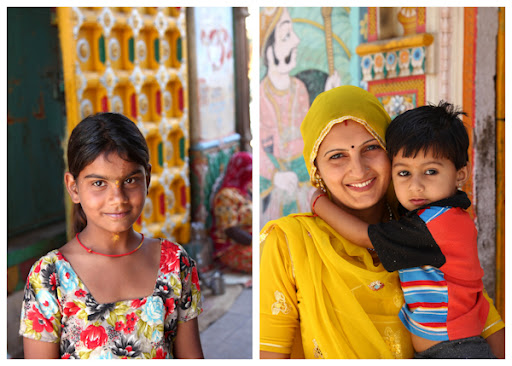

We came to a square that looked oddly familiar. Looking around I suddenly recognized it from a scene in Wes Anderson’s Darjeeling Limited, in which the three brothers pause their train travel for some shopping and a trip to a temple. “Owen Wilson had his shoe stolen right over there,” I thought! The square looked markedly different from the movie. Only a few shops surrounded the square—busy in the film—and a cow meandered past a few parked cars. We walked toward the temple-side of the square. Some really cute kids met us up top, just dying to have their photos taken. One child in particular could hardly stop wiggling after we showed him his image!








Before I knew it, they were handing Aron a small triangular package, full of sugar-coated fennel seeds, mint, and a bit of betel nut, and asking if I would like one too. I hadn’t seen any women chewing it, but I didn’t want to be rude—and I was curious. Aron tried to pay them, but they waved us off—despite persistent efforts—with a smile and a head bobble. We popped the paan in our mouths, lodging it in our cheeks, and began to chew. Minty heat and fennel mixed in my mouth, and while Aron confidently spat out the red paan juice, I… well… I started to panic a bit. “I don’t know what to do,” I told Aron. “Spit!” he said. “I can’t,” I replied. (I actually haven’t done a lot of spitting and I think I feared that it would go dribbling down my chin.) “Spit it out!” Aron gallantly offered his hand just as I was getting more and more uncertain about what to do with this wad of paan in my mouth. Aron threw it in the bush and rinsed his hand. As soon as it was out, however, the sweet flavor of the fennel washed over my tongue, and I told Aron I wished I could have it back. He just laughed.






We kept walking through the old town, past the spice markets where men weighed goods in ancient-looking scales, past more cows, and past the vegetable markets where herbs were heaped on mats.

We somehow had found our way back to the clock tower, which of course meant a lassi break: just outside of the gate to Sardar Market sit a couple of lassi stands—each making Makhania Lassis with cream, saffron, and cardamom. They are unbelievably good. The stand sat practically across the street from our hotel, where we retired to next. Aron was still recovering, and while the adrenaline of all the new discoveries had kept him going, he needed a breather.

After a power nap, Aron was ready to hit the street again. We had originally thought to walk up to Meherangarh Fort—Jodhpur’s dominating sight on the hill above town—but given Aron’s health and the time ’til sunset, we thought it best to take a Rickshaw. (Frankly, I didn’t mind a bit; it was quite warm.)





We were up in a flash, and got tickets and headsets. Unfortunately, we learned that while the fort stayed open later, we only had an hour before we had to return the audio guide.
We began our tour immediately and tried to move through quickly. It was a shame because the quality of the narration and specimens in the museum were truly impressive. One could easily spend half a day there.








With Mont Saint-Michel in the north of France, this will stand out to me as one of the most impressive constructions I’ve ever seen (the two are reminiscent of one another for the way they each seem to rise mythically out of their foundations). The ramparts of the fort extend from a sandstone outcropping and are themselves made of finely carved sandstone. Impressive from a distance, I was amazed to see all of the fort’s detail up close.
We got the audio tours back in the last minute and were pleased to find that we were free to wander the ramparts beyond the return-time.



I bought a pair of leather shoes at one of the souvenir shops just as they were closing, and then we strolled along the rows of canons down to a small temple.





From there, as the sun grew lower, we had a fantastic view of the blue houses that sit around the base of the fort, radiating from its edges. Jodhpur is sometimes called “the blue city” after the color of its houses. Our book explained that the high-caste Brahmin residences were originally painted blue (indigo was thought to protect the buildings from insects and help with cooling), and the color caught on. With the breeze being pulled through the ramparts’ openings, the sound of prayer behind us in the temple, and the sight of indigo-hued homes all around below, it was a pretty lovely scene.


When we finally decided it was time to depart, we expected to find a few rickshaws waiting at the exit. There was just one, and we wasted a little time negotiating (when we were clearly at a disadvantage) before agreeing to share a ride back to town with a lone traveler from Spain. While he took a few last photos, we found ourselves surrounded by young children and some teenage girls, again all eager to see their images projected on our camera’s screen.


Back at our hotel, we decided to stay put for dinner. Pal Haveli’s rooftop restaurant was recommended in both of the books we had brought along. Poor Aron was still struggling a bit with his appetite, but we were both able to appreciate the setting—in the shadow of the fort, overlooking the still-busy market square. Calls to prayer, amplified from mosques, filled the cooled night air.
Though no longer hungry, we agreed we each wanted another one of those delicious lassis and carefully made our way down the steep, uneven stairs back into town. The same young boy who had been at the stand earlier, and who had pretended to be bored and disinterested all-the-while staring at us intently, was still there. This time he managed a small smile before reverting back to a bored stare. We carried our lassis to-go this time. While Aron wasn’t looking, someone pulled at my arm and asked me to pay attention to the scene on the side of the street. “Look, look!”
At first I protested—“no, thank you”—and tried to move along, but then I made out that a cow was giving birth. I called out to Aron and we both watched as a calf slid out, wet and writhing and trying to stand. As it slipped about on the street, awkwardly trying to find its bearings, the mother ate the afterbirth. We stood, a bit in shock, with our to-go lassi cups in hand and jaws dropped. A few people clapped and celebrated. “Is this really happening?” I think I wondered aloud.


We woke with the sun again the next morning and, as we were always up too early, waited around while the Omelet-Man with his bright henna’d-hair set up shop, receiving his stacks and stacks of eggs. He made us a delicious egg sandwich and we could understand why he had become a beloved fixture of the city.

Passing packs of puppies on the street (thinking I’d like to pet them if only they weren’t so dirty), we went about another day of browsing. We considered bringing home some of the brass vessels intended to carry milk or water, and I thought about seeking out a tailor who would sell me a pair of the town’s namesake riding pants (Jodhpurs)—but we left empty-handed on both accounts.
Occasionally, a tout would try to chat us up and persuade us to visit his shop. It was almost funny how obvious they were, despite their efforts to appear as just a passer-by. Each seemed to wear the same polo-shirt (or some more Western-derived, fashionable shirt); more often than not, he had sunglasses (rare otherwise); and in better-than-average English he would try to first engage us on a topic like American basketball. The conversations were always benign, and we didn’t mind too much—though it’s never nice when someone is insincere with you. I would say this happened four or so times over the two days and we mostly got tired of wasting our time only to have to give a couple of firm “no, thank yous” when they’d mention that Richard Gere had visited their brother’s shop and maybe we’d like to have a look, too. It is good to note, however, that a couple of firm “no, thank yous” (maybe a raised hand with the second one) always worked when we encountered a hard sell.


We saw a large crowd gathered by a food stall and took it as a sign to investigate. People were lining up for fresh batter-fried peppers; we joined in. The serving was larger than we wanted so we gave one of our peppers to two boys standing nearby and moved along. Later, we found ourselves in back of the same pepper stand with a woman preparing them.




We were taking her picture when a few other onlookers came over to indicate that we should take theirs as well. The man took a look at his image and, apparently not completely satisfied, began twirling his mustache in anticipation of a re-shoot. These exchanges over photos came to be one of my favorite parts of our trip.













The selection of food goods and items was just tremendous, and with rare exception people were happy when we pulled out our camera and took photos. It was not uncommon to be offered samples (after which we usually bought—both because it was good and because they were so nice) and lots of smiles. For example, above is a stack of candied pumpkin, which we were urged to try when we leaned in to investigate. It was very, very sweet, and slightly crunchy on the outside while soft and syrupy on the inside.



Further down the road was a small mall with a McDonald’s and a few retail shops. Well-to-do pre-teens roamed in small, gender-divided packs, and we looked around for just long enough to let the generous a/c cool us down.
Just before returning to the old market, we stopped in Anokhi–a multi-floored branch of a textile company–and had fun picking out a bedspread that we planned to use as a picnic blanket back in New York.

We had planned to walk back into town, but felt ourselves withering in the sun and hailed a rickshaw. He dropped us outside old town, in the market, and we picked out some mangoes to bring back to our room.

We also couldn’t pass up the opportunity for another lassi. Or two.


Late in the afternoon, we gathered up our things and hailed a rickshaw to take us back to the train station for our overnight train ride into Delhi. We gave ourselves an hour or so to figure things out, and it was a good thing: the scene inside the station was chaotic to say the least.
A month or so prior to our trip, I had reserved us two first-class berths on the overnight train to Delhi, leaving at 7:35pm and arriving at 6:25am. While our seats were guaranteed, I was told we should find our specific cabin assignments at the station.

Inside, light was streaming in from the windows and the dust in the air seemed to glow with the heat. Families squatted patiently, with piles of bags. Aron was torn between wanting to whip out his camera and try to capture it all, and wanting to deal the the chaos of all our bags and determine our seats. We decided on the latter, but it wasn’t immediately clear where we should go. There were lines at the ticket counters and a cluster of people trying to edge toward a small information window. We went out to the platform and found lists of names posted to a board. There were literally reams of paper. Among the rows and rows of Indian names, ours should have been easy to spot. But after several times through, we determined our names were not there.
We made our way back inside to try to crowd ourselves up to the window, where even more people had gathered. I stood with our bags and watched Aron attempt to hold his ground. After several minutes of nervous glances in my direction, he finally found an answer.


We had ten or so minutes until our train pulled up, so Aron started to take some photos. As before, people were very interested and wanted to have their photos taken by us and with us. I’m not sure what it was, but the interest, especially that of some young men, didn’t feel as benign as before–perhaps because we were on guard after hearing so many cautionary stories of theft at train stations. We put away the camera and walked away.
When our train pulled up, we still felt everyone’s, including the group of young men’s, eyes on us. We decided to get on the car next to ours and wait a few minutes until we saw them get on the train; we then hopped off, switched to our car, and settled down in our sleeper. I’m sure their interest was harmless–we were an unusual sight after all–but it felt safer to keep the location where we would be sleeping (with all of our stuff) anonymous.


We shared a four-bed cabin with two nice businessmen who spoke enough English to exchange some pleasantries. Various staff came by, distributing pillows, sheets, and blankets. Soon we purchased a boxed dinner to share and some chai. Once we started moving though the dark desert, I hopped up to the top bunk. In no time, I was out.
I woke up as the sun was about to rise over Dehli. I felt so refreshed and well-rested–I slept soundly from the moment my head hit the pillow. I looked down to see that Aron had locked up all our big bags under his bunk and was hugging our most valuable bags like a teddy bear. Our neighbors had changed; an older Indian couple sat opposite us. Aron looked up at me with a bit of a scowl (I was supposed to have taken one of the bags he was hugging), but it quickly turned to a smile.
We creeped though the outer neighborhoods of Dehli, and Aron tried to catch a few more minutes of sleep. (I guess that, burdened with the responsibility of keeping our bags safe all night, he hadn’t slept as well as I.)





Check-in wasn’t until 3 p.m., so we could not have been happier when they told us we could go ahead to our room–in spite of it being only 7:30 a.m. After some quick, hot showers, we went back downstairs to check out the breakfast buffet.


We chose a spot by the window and set down a copy of the Herald Tribune and some juice to hold the table. We now like to joke about how the only place anyone ever stole anything from us in India was at the Le Meridien: someone took our newspaper!
The food was delicious and seemed to have something for every palate. As we’d only been traveling for 8 days, I certainly wasn’t tired of Indian food–so that station was my favorite. I probably overdid it when it came to freshly fried bhaturas (fried, puffed dough) and chutney that morning.
After breakfast, we started a very full day–focusing first on Old Delhi.
Delhi, as whatever guidebook you use will surely tell you, has been the site of eight cities over the past 3000 years. Old Delhi (Shahjahanabad) was constructed in 1638 by the Emperor Shah Jahan, whereas New Delhi–the eighth city–was founded by the British 300 years later and became the capital of modern India in 1947. Old Delhi is home to famous sites like the Red Fort, Jama Masjid, and Chandni Chowk. New Delhi holds India Gate, the broad Rajpath, and the Presidential Palace; the old and new converge around Connaught Place.

We started by taking a taxi to the Jain Bird Hospital. True to their principles of non-violence toward all living beings, the Jains work to save every bird who comes through their door–even the pigeons that drive Aron so crazy. We took off our shoes, and made our way into the hospital. It was touching to see the care that was being bestowed on sparrows, gulls, birds of prey, and–yes–pigeons. When the birds are healthy enough, they are released from the roof of the building. Judging by the many birds swirling above the hospital, they feel a certain attachment to the place.



From there, we took our lives in our hands crossing the busy, dirty thoroughfare–Chandni Chowk– to a spot where beautiful flowers were being sold and prepared for offerings. Safely across and all the while taking in the sights and sounds and smells around us, we headed about four blocks down the road to Sisganj Gurdwara, a Sikh temple. We used the Fodors walking tour for a suggested route.


I think, especially for Aron who felt a certain kinship with the tall Sikhs, this was a favorite stop. Everyone must cover his or her hair and the temple had garments available for the purpose. Prior to entering the building, we removed our shoes and walked through the flowing water on the marble steps which, besides feeling cleansing, felt blessedly cool.



The space was filled with music and chanting. It felt very welcoming: we were greeted with a nice balance of smiles and disinterest.





With our shoes back on, we veered into the maze of narrow streets that makes up the old town. Bikes carying everything from milk to propane zipped past us, as did bike-rickshaws caring tourists and school children. Carts sat with fruit and balance scales. Every neighborhood had a specialty and a palpably different culture.


One of my favorites was the wedding district, where brides were seen with their mothers picking out jewelry and ribbons. There was one ribbon store in front of which we stopped to admire; the store owner couldn’t have been prouder of his wares and was clearly pleased we were impressed. It was so much fun to just get lost in the maze and look into all of the shops.



Still, we made our way to the sweet shop. Kanwarji’s had been recommended in our book, and I was happy to see that all of my favorite Indian sweets were present. We bought several blocks of the crystalline, beautiful candied pumpkin along with fried twists of dough sweetened with sugar syrup, and these little gems–covered in silver leaf.

We dove back into the old town, weaving through the paper district, before emerging to find Jama Masjid, a splendid mosque made of red sandstone.


The men outside whose job it seemed was to ensure that no one came in without bare feet or with exposed shoulders did ask me to tie my scarf more like a cape than how the Indian women were wearing theirs. After I was through the gates, I tried to better emulate the stylings of the other women.


I was surprised to find I had a little shadow–a sweet girl in pink–right off the bat. A few women asked to have their photo taken with me. And once one did, camera mobile phones were coming out all around to snap pictures of me alongside a friend or family member.






Aron and I danced over the hot stones to where the stairs up to the minaret began. Apparently women must have a male escort to visit the top of the minaret. We waited a few minutes before being allowed to go up. Honestly, we could have waited more–the narrow staircase was hot and smelly and full of people. We paused at the windows and tried not to crowd and before too long were up at the top of the small tower where a wonderful breeze was blowing. We took in the 360-degree view of the city while being careful not to fall backward down the narrow stairs. It was especially tricky when we were asked again to pose for photos while getting out of the way of people trying to head back down; it was of course all worth it for the view!



Aron and I made our way back to our shoes, tipped the guard for keeping them safe, and started to walk out of the old city–passing more tempting street food, passing on the chance for a shave and a hair cut, and finding ourselves almost as confused by what these men were doing with all of these wires as they seemed to be.

We were both parched at this point and had depleted our water supplies–and of course we were in the first place where we were actually having a hard time finding a source of bottled water. One particularly cruel cart rolled by–filled with mint and ice that the vendor was chopping make a refreshing slush. Given that Aron had already been sick once, and that our good sense warned us against drinking anything with block ice in it, we knew we had to just tough it out. But it was hard!

We finally made our way to a subway station and took it toward Connaught Place. The security for the subway is intense and I was amused by how carefully the female screener studied my brass necklace. I think it was suspicious for its lack of shine. (I imagined her thinking “why would anyone wear non-shiny jewelry?”)
We had read that there was some good shopping to be had on some of the circles. We didn’t fully explore the area, but what we saw did not catch our interest and we moved on pretty quickly.


After a few failed attempts, we managed to flag down a rickshaw driver who agreed to take us down to the President’s Palace and drive along the Rajpath. We hopped in the back and Aron took out the camera. When the driver spotted it, he slowed down to point out the points of interest: “There is a Sikh temple, the biggest in Dehli.” “There is the ambassador of England’s house.” But his enthusiasm really picked up when we turned down toward the presidents house and he spotted the U.S. ambassador. Sadly, Aron and I had no idea who he was among the crowd of cars and businessmen, but our driver was thrilled at the timing and his enthusiasm was contagious. We made a slow loop around the President’s House and decided to travel the length of the Rajpath down to the India Gate. By this time the sun was low on the horizon. We had heard that Indian families and couples tended to gather here at twilight.







After some time spent smiling at the other couples who smiled at us, we moved on for more snacking. One snack in particular was quite prevalent: mini puris. Aron sampled three of the small and hollow, fried balls, which were filled with savory goodies and then dipped in a sweet sauce.



We realized our hotel was remarkably close, so we just walked back from the India Gate for a brief rest before we went out again for the evening. Our books had tons of wonderful sounding, elaborate restaurant suggestions but we were hoping to see where young residents of New Delhi might go for something more reasonable. We headed slightly outside of our neighborhood to Defence Colony Market for some South Indian cuisine in a no-frills, popular spot called Sagar. The dosas and uttapam were delicious! It was fun to see another side of the city.

I loved that the description for the weather was “uneasy.” It seemed like a generous way to describe 106-degree highs.
We woke up early the next morning (both agreeing that the Delhi smog was creating a tickle in our throats) and packed our bags. The hotel agreed to hold them for us while were gone for the day.


We took a car to Humayun’s Tomb, a 16th-century shrine that was the architectural basis for the Taj Mahal. The first octagonal shrine we toured confused us. We weren’t sure if we had misunderstood what we were looking for.
But then we found the archway leading to the main site and it was clear that we were in the right spot.



We felt a bit silly when we went further and saw the huge, majestic building that clearly bears much more resemblance to the Taj Mahal. We walked up and into the shrine, admiring its stone carvings, the sheer size, and the surprising lack of people who were interested enough to come inside.
After all of our walking and exploring, we were quite ready for an A/C break and a bite of lunch.



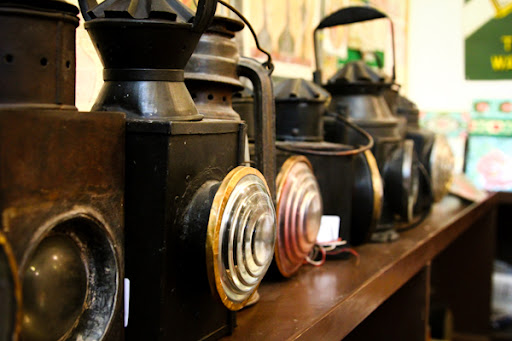
We were eager to check out the purportedly hip neighborhood of Haus Khas village. Old and new structures apparently mix around art galleries and boutiques. Our cab dropped us off, and though he offered to stay until we were ready to go, we told him we were just planning on taking a rickshaw back to the hotel (they were just so much cheaper). We began wandering around the apartment-building like stores adjacent to the park. There was a lovely furniture and home-goods store called Country Collection where we picked up some vintage teak printing blocks. There was a favorite stop where we found vintage Bollywood paraphernalia along with a collection of other ephemera, like wooden cow bells, retro alarm clocks, and train lights.




Vintage phones in one antique shop tempted us, but we were just too unsure as to whether the electronics could work in our apartment to bring one home. I was actually more tempted by the beautiful textiles I found. One man explained that his family has been collecting and restoring traditional fabrics for years. He had an amazing collection, gathered from various Indian villages. Many showed some signs of age, but the hand-sewn detailing throughout was incredible. With more time, I would have loved to pour over everything in there more closely.

We considered a restaurant in the park which was well known, but decided we (well, I) couldn’t pass up a chance for some good South Indian Tali. It was a toss up over what we enjoyed more: the coconut uttapam or the view of fashionable young Delhi residents meeting over lunch. Here were all the dark sunglasses seemingly absent everywhere else.


We took a rickshaw back to the subway, and then the subway back to Old Delhi.
The subway cars are continuous rather than divided into cells, and Aron said he could watch the wave of heads turning as his 6 foot 8 frame walked on and ducked inside. We heard mumbling and a few whispered guesses: “American.”
Wanting to try every possible mode of transportation, we next hopped on a bicycle rickshaw for a short ride down Chandni Chowk to the Red Fort. Anyone willing to bike us around in that weather earned our respect (and a tip).

The Red Fort–the former palace city of the Mughal empire, named for its red-sandstone–is one the major tourist attractions in Dehli, both with foreigners and with residents of India.






Our visit happened to coincide with that of a visiting village from Rajasthan. Seeing them reminded us of all the beautiful women we saw in Narlai and Jodhpur and it was nice to see again just how brilliant their outfits are. And we were not alone in appreciating the sight: Indians in western clothes were equally interested in taking their photos.

Meanwhile, while Aron was off snapping photos of the Rajasthani visitors, several groups of Indian boys had gathered and were asking to take their photo with me. I agreed, but as the group grew and I found myself telling one not to put his arm around me, please (he was very quick to take it away) and spotting more camera phones coming out of pockets, I started searching for where my husband had disappeared to! Aron turned in time to catch one pose, but I was sorry he missed the bulk of the scene. A friend from India later hypothesized that foreigners are still relatively rare. Even so, we were surprised at how many times we were asked for photos, particularly at a major tourist site where there were other white foreigners visiting.
It was also quite funny to notice, as time went on, how obvious attempts to subtly sneak photos were: someone would pretend to take a photo of a building, but take one of us instead. These of course were the same maneuvers that we had been trying throughout the trip–no doubt with the same degree of success.






The Red Fort–the former seat of the Mughal empire, the empire whose influence was so strong in the areas we’d visited previously, and a powerful symbol of Indian independence, with its abandoned British barracks–seemed to be the perfect place to end the trip. The visit from the Rajasthani villagers just made the moment that much more perfect.
We picked up a cab ride back to our hotel. Le Meridien once again was so impressive: we couldn’t believe it when they let us use a fresh hotel room for a few hours to shower and freshen up before our flight. We were so grateful.

And with that, we picked up our bags and headed off to the airport.
One note: they required that we have a printed confirmation to get inside the terminal where we would check bags and get our boarding passes–and although our flight wasn’t boarding until 11pm, the customer service desks closed at 8pm. Luckily, a man who worked in the building took a tip in exchange for printing something that confirmed we indeed had a flight that evening. Having successfully made it onto our flight, we were able to look back and laugh: it was insane how many different pieces of paper and how many things were stamped between the time we stepped out of the cab and onto a plane.







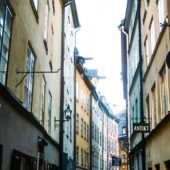

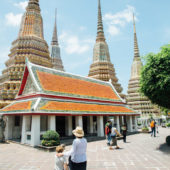










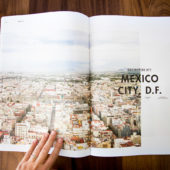
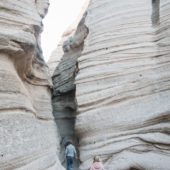

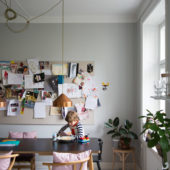


















30 Comments